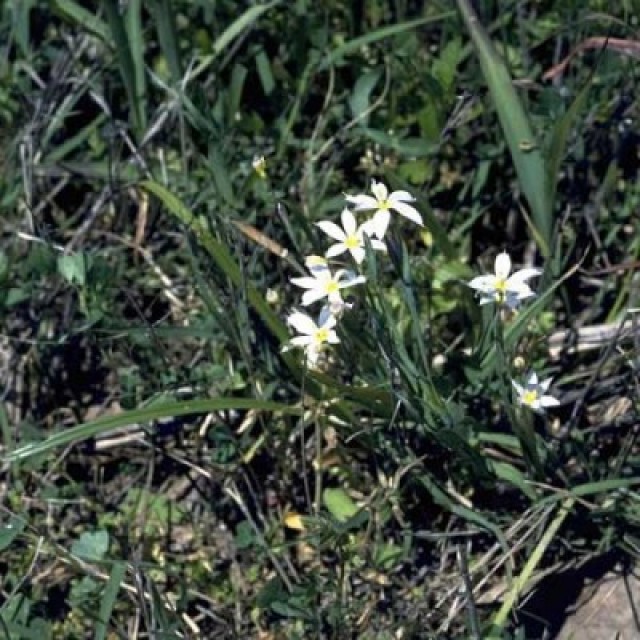COMMON NAME
Blue-eyed grass
SCIENTIFIC NAME
Sisyrinchium campestre
ALSO KNOWN AS
prairie blue-eyed grass, white-eyed grass
Plant family
Iris (Iridaceae)
Plant group
Wildflowers and Herbs
Prairie blue-eyed grass is a small-statured herbaceous perennial plant native to midwestern North American prairie habitats.
24 reports
14+
OBSERVERS
24+
OBSERVATIONS
Identification hints
Prairie blue-eyed grass is one of a handful of species native to North America in the Sisyrinchium genus. These species can have overlapping ranges and be difficult to distinguish!
Did you know?
These small delicate plants are part of the iris family (Iridaceae). Native short-tongued bees such as Halictids, and syrphid flies visit the flowers. The fruits and seeds are occasionally consumed by prairie chickens and wild turkeys.
DISTRIBUTION IN TH U.S.
Arkansas
,
Iowa
,
Illinois
,
Kansas
,
Louisiana
,
Michigan
,
Minnesota
,
Missouri
,
Mississippi
,
Nebraska
,
New Mexico
,
Oklahoma
,
South Dakota
,
Texas
,
Wisconsin
HABITAT
Prairie blue-eyed grass prefers prairies, hence the name, and open woodlands, sun, and dry to moist sandy soils.
ATTRIBUTES
Leaves
Leaves of prairie blue-eyed grass look similar to grass, hence the name. These grass-like leaves look quite similar to the flower stems but are technically not the same structures.
Flowers
Flowers of prairie blue-eyed grass star-like and clustered at the tips of stems with 6 petal-like "tepals" that are pale blue to white and yellow in the center. Flowers are ½ to ¾ inch in diameter, The very center of the tips of the tepals have thin needle-like projections.
Fruits
The fruits of prairie prairie blue-eyed grass are small and brown, globe-like capsules that split into three parts to release the small, dark-colored seeds.
Bloom Time
Prairie blue-eyed grass blooms in May and June.
See Menu
- 2021 Chicago Botanic Garden. All Rights Reserved.
-
Creative Commons
BY-NC-SA 4.0 - Terms of Use
- Privacy Policy
- Data Sharing and Citation Policies
- 2021 Chicago Botanic Garden. All Rights Reserved.



